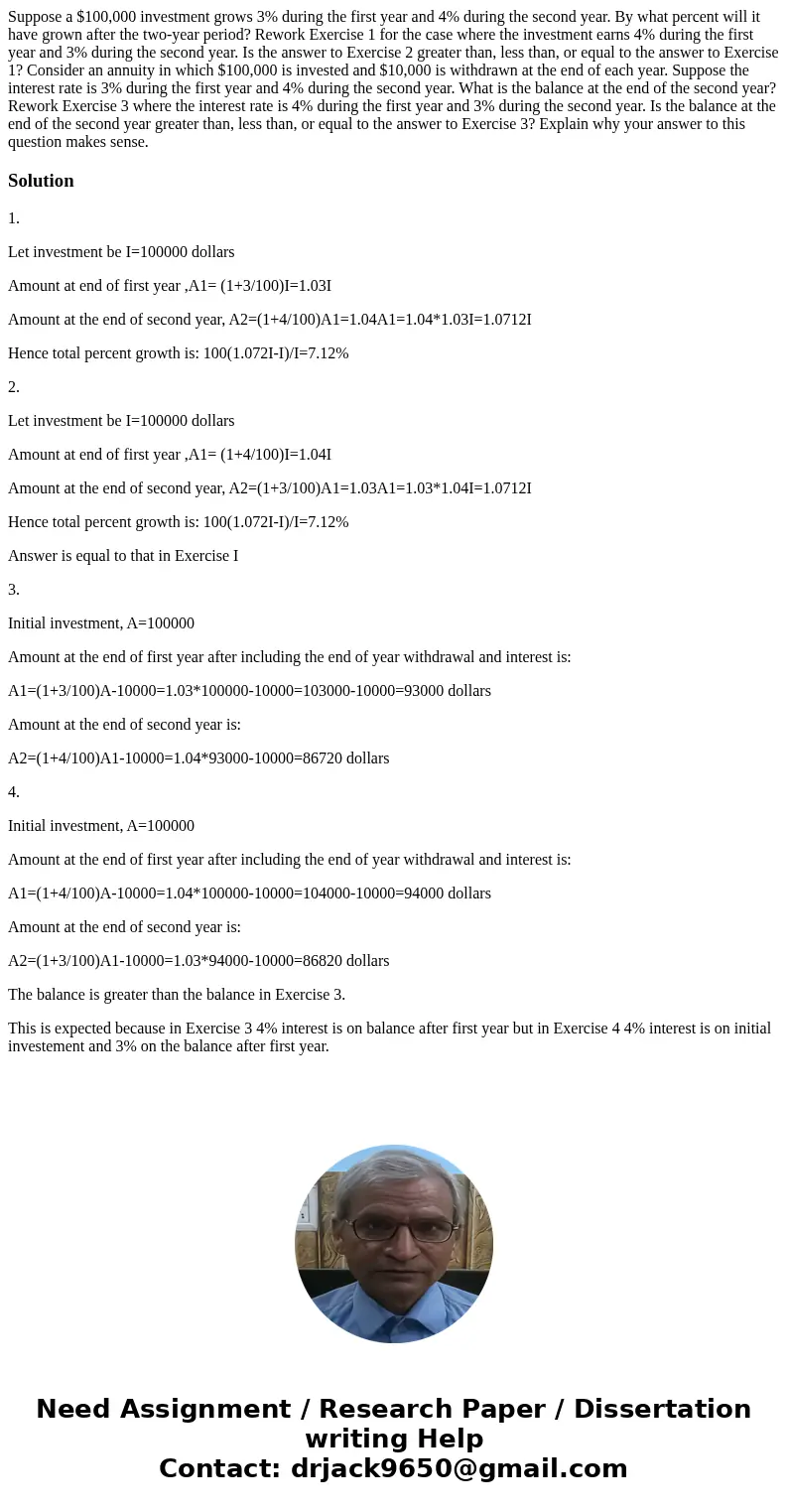Suppose a 100000 investment grows 3 during the first year an
Solution
1.
Let investment be I=100000 dollars
Amount at end of first year ,A1= (1+3/100)I=1.03I
Amount at the end of second year, A2=(1+4/100)A1=1.04A1=1.04*1.03I=1.0712I
Hence total percent growth is: 100(1.072I-I)/I=7.12%
2.
Let investment be I=100000 dollars
Amount at end of first year ,A1= (1+4/100)I=1.04I
Amount at the end of second year, A2=(1+3/100)A1=1.03A1=1.03*1.04I=1.0712I
Hence total percent growth is: 100(1.072I-I)/I=7.12%
Answer is equal to that in Exercise I
3.
Initial investment, A=100000
Amount at the end of first year after including the end of year withdrawal and interest is:
A1=(1+3/100)A-10000=1.03*100000-10000=103000-10000=93000 dollars
Amount at the end of second year is:
A2=(1+4/100)A1-10000=1.04*93000-10000=86720 dollars
4.
Initial investment, A=100000
Amount at the end of first year after including the end of year withdrawal and interest is:
A1=(1+4/100)A-10000=1.04*100000-10000=104000-10000=94000 dollars
Amount at the end of second year is:
A2=(1+3/100)A1-10000=1.03*94000-10000=86820 dollars
The balance is greater than the balance in Exercise 3.
This is expected because in Exercise 3 4% interest is on balance after first year but in Exercise 4 4% interest is on initial investement and 3% on the balance after first year.

 Homework Sourse
Homework Sourse